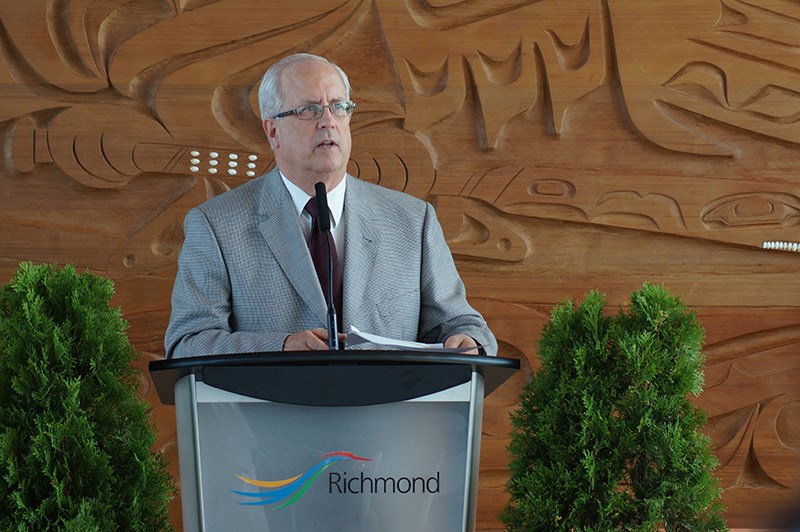Two lawsuits with First Nations groups are preventing the City of Richmond from doing a land acknowledgement before council meetings, according to Mayor Malcolm Brodie.
An acknowledgment is done at the beginning of Richmond Board of Education meetings that the city is located on the “traditional and unceded territory of the First Peoples of the hən̓q̓əmin̓əm̓ language group,” and community activist Karina Reid has been asking why the city doesn’t do the same.
When asked by the Richmond News, however, why there isn’t an Indigenous land acknowledgment at the beginning of council meetings, Brodie said it is because the city is in “serious litigation” with various First Nations, and “you don’t acknowledge what might be important to the subject of litigation.”
The Cowichan First Nations are currently in court with the City of Richmond about land in southeast Richmond – 780 acres near Triangle Beach.
Furthermore, there is a dormant lawsuit between the city and the Musqueam First Nations regarding the Garden City Lands.
To educate the public on First Nations history in Richmond, Reid said she’d also like to see more information on the city’s website, as she’s concerned Richmond residents are “oblivious” to it.
“To me, it’s like erasing history,” she told the Richmond News.
Reid has approached city staff about why a land acknowledgment isn’t part of council meetings as well as questioning the amount of Indigenous history available on the website, but she was told it was because Richmond is a diverse city and didn’t want to name a certain group.
In fact, city spokesperson Clay Adams pointed out there are 150 ethnic origins in the city, more than 100 languages spoken in Richmond, 60 per cent of residents were born outside Canada and three-quarters of the population are visible minorities.
“Our website ‘history’ page is merely an extremely brief snapshot of the diverse cultures and history that made Richmond what it is today,” Adams explained.



